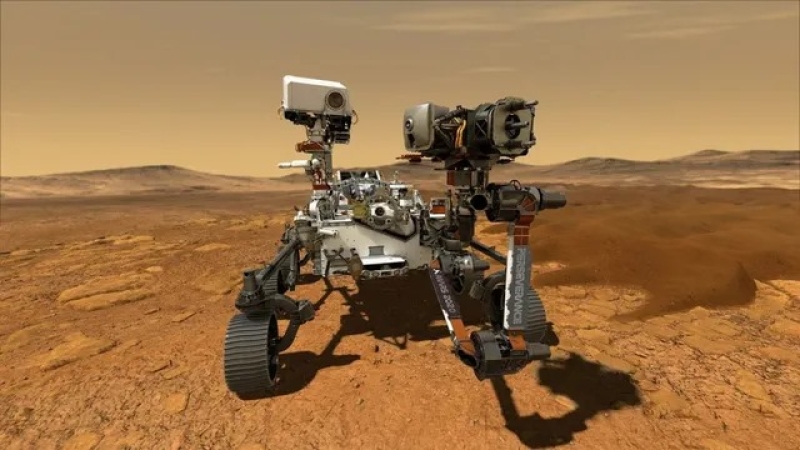- 2 killed as bus hits truck on Dhaka-Chattogram highway |
- Chief Adviser seeks prayers for Khaleda Zia’s recovery |
- Southeast Asia Floods Kill Over 250, Thousands Displaced |
- Trump Vows to Halt Migration From ‘Third World’ Nations |
- Journos should strengthen themselves to secure rights: Fakhrul |
NASA Rover Detects First Evidence of Lightning on Mars

NASA Rover Detects First Evidence of Lightning on Mars
A NASA rover has recorded evidence of lightning on Mars for the first time, capturing tiny “zaps” generated by the planet’s ever-present dust storms.
Scientists have long debated whether electrical discharges occur in Mars’ dusty atmosphere, but proof has been elusive—until now.
NASA’s Perseverance rover, which has been exploring Mars since 2021, inadvertently recorded these electrical signals, according to a study published in Nature.
These are not thunderous, kilometre-long bolts like on Earth, but small sparks similar to the static shocks we sometimes feel from car doors in dry weather, explained Baptiste Chide of France’s CNRS research centre.
“While low in energy, these discharges are happening all the time—everywhere on Mars,” he said. The phenomenon occurs when dust grains rub together, become electrically charged, and release short arcs of energy a few millimetres or centimetres long.
On Earth, desert dust storms rarely produce such discharges. But Mars’ thin atmosphere and unique composition allow sparks to occur more easily.
The idea of Martian lightning has been theorized for years. An instrument on the European Space Agency’s Schiaparelli lander in 2016 was designed to detect it, but the spacecraft crashed during landing.
Perseverance’s microphone on its SuperCam instrument recorded the first sounds of these discharges, providing what scientists call “persuasive evidence” of dust-induced electrical activity.
The discovery could improve understanding of Mars’ climate, which is heavily influenced by dust, and may help explain the rapid disappearance of methane and the breakdown of organic molecules on the surface.
It also has implications for future missions. Instruments and even astronaut suits may need to be designed to withstand these constant electrical discharges, raising questions about the safety of long-term human presence on Mars.

